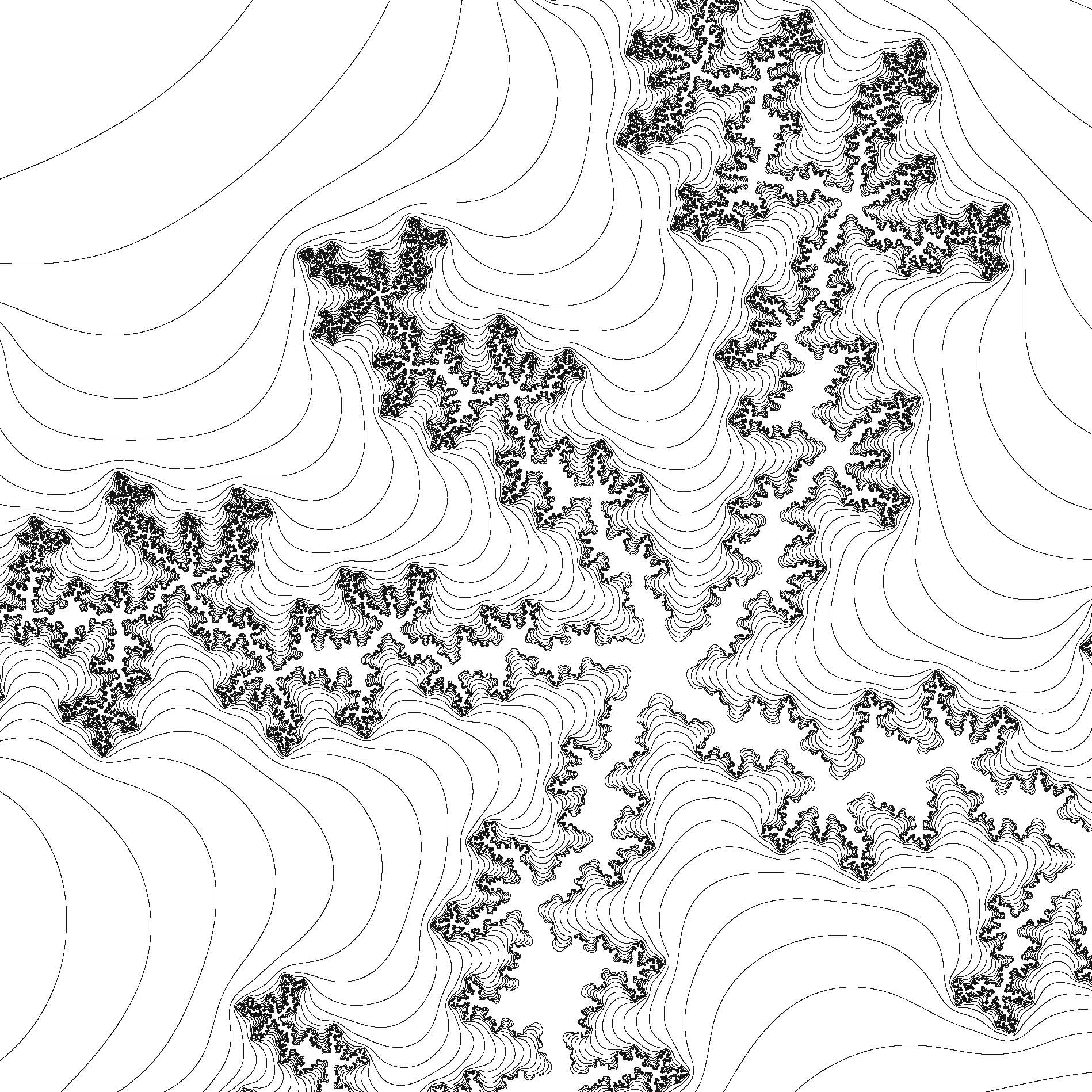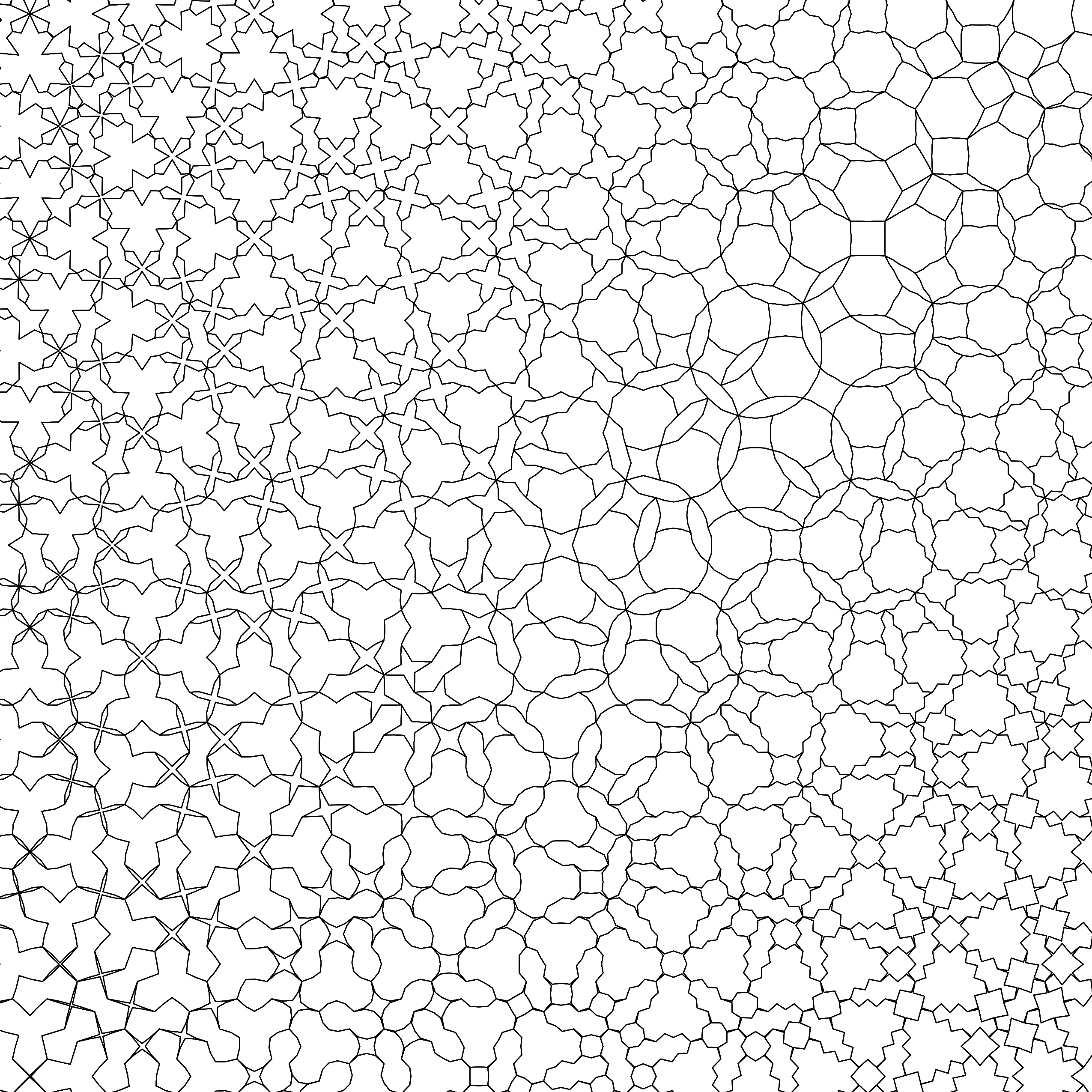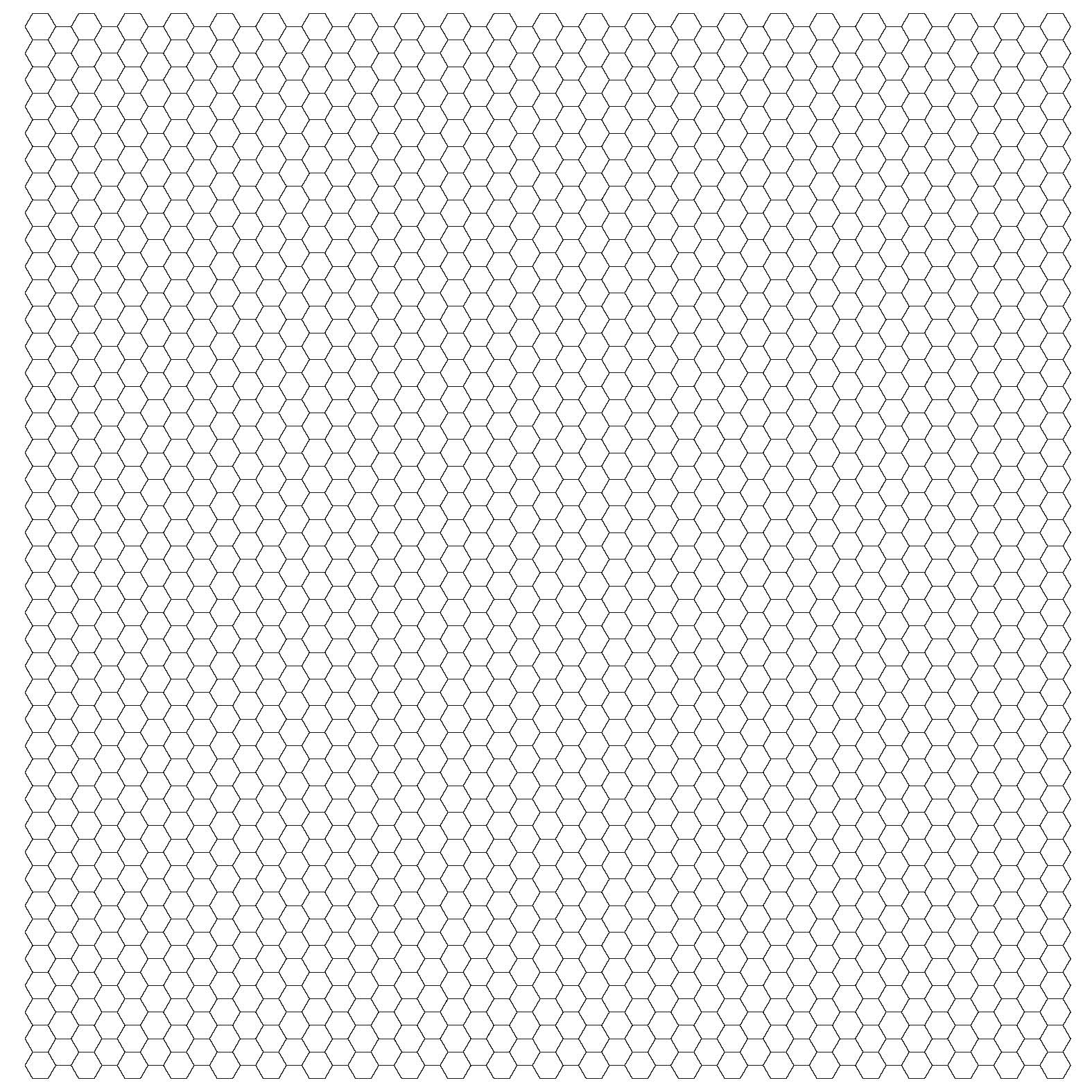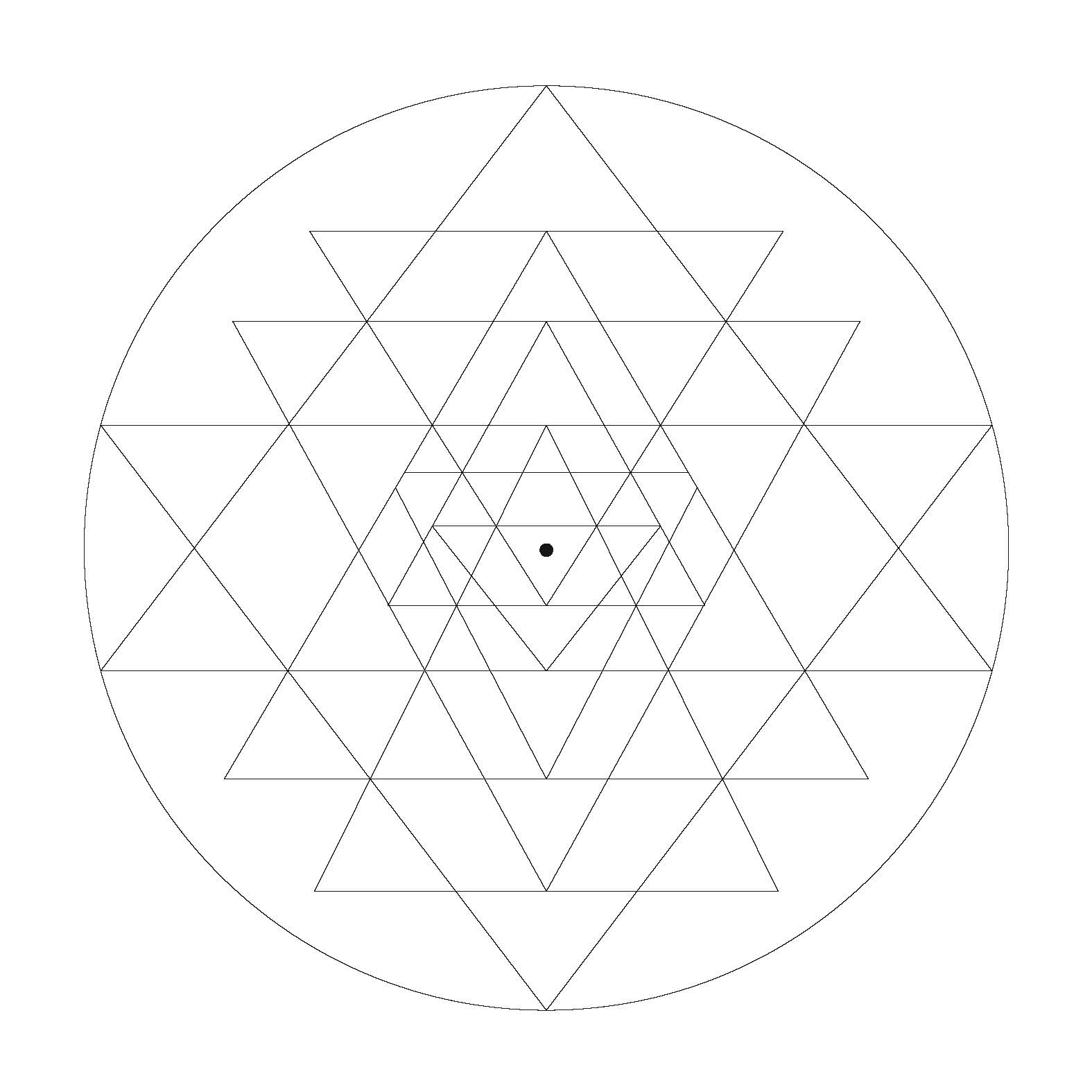Coloring By Numbers, Mathematically
The new coloring book “Patterns of the Universe” highlights the visual beauty of mathematics.

A detail of the Mandelbrot set, a fractal named after Benoit Mandelbrot, the French mathematician who investigated it in the 1970s. If you were to zoom in at any point on the intricate, wiggly line, the elaborate pattern would reappear infinitely. Art copyright © Edmund Harriss
If you’ve ever felt intimidated by math, or consider it a daunting labyrinth of numbers and equations in a textbook, you might think differently once you open up Patterns of the Universe: A Coloring Adventure in Math and Beauty.
Flipping through this new coloring book is a mesmerizing journey. From perfect hexagonal tilings to luscious sine waves to nautilus shell spirals, every line illustration by mathematical artist Edmund Harriss (and a handful of others) brings a hypnotic sense of harmony.
“We think this is something that you can appreciate, knowing nothing about math,” says math writer Alex Bellos, who conceived the idea for the book and worked with Harriss to choose the designs. “To me, it’s like an encyclopedia of amazing mathematical images that can be enjoyed for their aesthetic appeal—but can also be enjoyed to learn stuff.”

The drawings in the book are based on mathematical concepts, such as prime numbers, fractals, and tessellations. Readers are encouraged to color as they please—“you should do it exactly as you want to do it; there are no rules,” encourages Bellos—though some drawings offer prompts based on the math at hand.
One page in the book, for example, instructs you to color by the numbers on a Sudoku grid. For another drawing called “Coin Hex” in a section on randomness, you choose two colors, assign each to a side of a coin, and then flip the coin to determine which color you’ll shade in each of the hexagons in a full-page hexagonal grid. The resulting color scheme is in fact random. “Most people think that math is pattern, but it’s also the absence of pattern,” says Bellos. When it’s all colored in, this page is “rather beautiful,” he muses.

Bellos first came up with the concept for his book after noticing a friend had a famous mathematic image, the Ulam spiral, on a wall in his home. “And I thought, well, it actually works really well as art,” he says. “Art is supposed to provoke you, and to have this kind of deeper meaning.” Bellos was inspired.
He realized that exposing aesthetically pleasing mathematical images like the Ulam spiral might be a good way to communicate math to a broader audience. He had also noticed a recent boom in the popularity of coloring books for adults, which are often marketed as a way to relieve stress and anxiety.

And math itself could be considered a form of stress relief. Centuries ago, mathematical concepts were used in a lot of religious imagery to induce contemplation, says Bellos. For instance, the first drawing in Patterns of the Universe is a Sri Yantra, a Hindu symbol that’s long been used for meditation and worship, and which happens to be a basic geometric composition of nine interlocking triangles with a dot in the middle. “You can look at all these images in this book, and you can contemplate them, you can meditate on them,” says Bellos. “It fits in really, really well with this whole idea of coloring as art therapy.”
Plus, you might gain some mathematical insight in the process. “It’s a bit wacky, and geeky,” Bellos says. “But it’s kind of cool.”
Teachers and educators can request a printable classroom packet via the book’s page here.
Images excerpted from Patterns of the Universe: A Coloring Adventure in Math and Beauty © Alex Bellos, 2015. Reprinted by permission of the publisher, The Experiment. Available wherever books are sold.
This article has been updated to reflect that Bellos conceived the idea of the book and chose the designs with Harriss.
Chau Tu is an associate editor at Slate Plus. She was formerly Science Friday’s story producer/reporter.